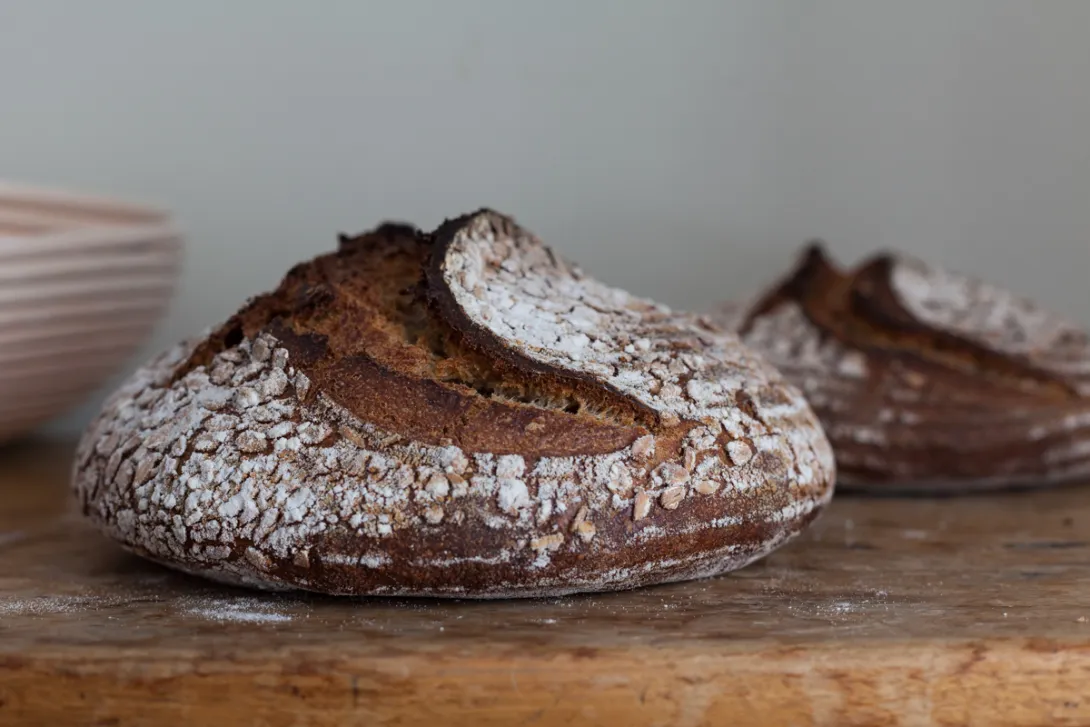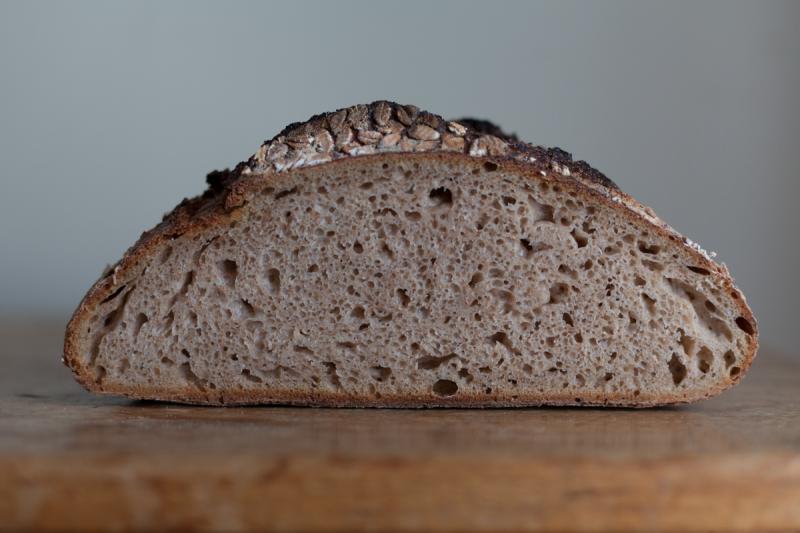
I've been baking the Country Bread from Chad Robertson's Tartine book a lot over the last year. I tweaked the formula and procedure a bit each time and learned a lot about working with sourdough all the while. Last month, I received Tartine #3 as a gift and I'm ready to be challenged by the higher whole grain formulas. The Spelt Wheat is my second bake from the book (the first was the Oatmeal Porridge Bread). It uses spelt flour, white unbleached flour, whole wheat flour (I used Red Fife), and a bit of wheat germ. Making this is a bit more involved than the Country Bread because it requires sifting the whole wheat flour and a portion of the spelt flour to yield high extraction flour but otherwise, the process is pretty similar. I did a two hour autolyse and then a four hour bulk ferment. The resulting dough was wetter and stickier than I'm used to and it was quite hard to shape. I had to add a lot of stretches and folds at the pre-shape stage in order to get a reasonably decent boule that could then be "rolled" in the spelt flakes. After shaping and putting in bannetons, I retarded the loaves in the fridge for twelve hours. In the morning, I baked them right out of the fridge without bringing to room temperature.

The loaves hadn't risen in the fridge at all but the oven spring was still reasonable; I'd say they doubled in height in the oven. The crumb isn't very open (probably because I had to manipulate a lot in the shaping stage?) but it is moist and very light. The flavor is really nicely balanced and delicious. I'll be returning to this one often, I think.
- Julie McLeod's Blog
- Log in or register to post comments
using Tartine bread formula and tweaking for my own experimentation. But I often come up wanting the crumb to look more like the breads I see in the photographs of the book. From reading your description, it looks like you did everything right, but did not get as much oven spring or air in the crumb as you would have liked.
Yes, I did hope for a more open crumb and more oven spring (along the lines I'd been getting with the original Country Bread) but with this higher percentage of whole grains, my expectations may have been too high. In any case, I'm pleased with the taste and look forward to a lot of experimentation with the recipes in this book.
to me, inside and out, depending on how much whole grain is in the mix. The lot of extra stretches and folds before preshape is the likely cause of the way the crumb came out. Light quick hands that gently degas the dough while getting the skin tight is what you are looking to do. You will get used to wet dough in no time once you work with it more.
Happy baking
Thanks for the tips! Will try this with my next bake.
Hello Julie
So this is what you've been up to, Tartine land, good looking bread, tastfully photographed.
Do you usually have more rise during the refrigerator proof?
How would you describe the level of acidity?
I really should check to see what this Chad fellow is about......his methods could be beyond my level of patience though......i'd be thinking , how about a .2% fresh yeast addition.
cheers daniel
Hiya Daniel.
I really like the Tartine method of stretch and folds rather than mixing. It suits me since I don't have a really good dough mixing machine and I find I like having my hands on the dough through the process anyway. I've had good luck with the basic formula in the first book but the formulas in the third book contain a higher percentage of whole grains as well as higher hydration so I'm finding them to be difficult doughs to shape.
So far, I haven't achieved anywhere near the sour I've been seeking since starting on my sourdough exploration last year. I admit I've all but given up on that and am concentrating on other aspects of baking.
Hope to see you here more this year.....I'm always inspired by what comes out of your mini-bakery.